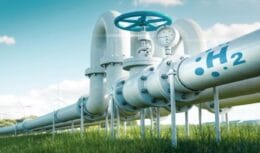
The production and export of wind blades are among the specialties of the Port of Pecém and The market leader Aeris energy
The 03 wind blades in the featured image of the article were jointly produced by the two companies, especially Aeris Energy, in the industrial area of Porto do Pecém, to be stored in an exclusive area in the company's port terminal yard and then be shipped to the USA.
Read also
- Heftos closes contracts with Petrobras and Trident Energy for services at the Gabriel Passos Refinery and Campos Basin
- Technicians, boilermakers, analysts and more being requested for vacancies at Companhia Siderúrgica do Pecém
- TEN – Torres Eólicas do Nordeste opens selection process with several job openings, including PCD
- Solar energy startup has developed fully transparent solar panels
Also, last year Aeris energy at the Port of Pecém transported approximately two thousand wind blades. The number is three times greater than the movement recorded in 2018, when 683 blades were shipped to wind energy parks around the world.
What are wind blades used for?
The set of wind blades is part of the triad of basic components that make up the wind turbine. Connected to the nacelle and supported by the concrete tower, the wind blades have an aerodynamic profile, weigh around 17 tons each and are over 60 meters long, equivalent to a 20-story building.
In summary, as previously mentioned, it is the blades that move the wind turbines that transform the energy of the event into electrical energy. In the Port of Pecém, the wind blows in favor of renewable energies every day, leveraging the Brazilian economy.
Wind energy in Brazil
Wind energy is already the second largest source of the Brazilian energy matrix. According to the Brazilian Association of Wind Energy (ABEEólica), the installed capacity in the country reached the mark of 16 GW in the first half of 2020. There are 637 wind farms and 7.738 wind turbines.
In 2019, the wind industry invested BRL 13,6 billion in Brazil, according to data from Bloomberg New Energy Finance (BNEF). The infrastructure generated 55,9 TWh of energy, 15% more than in 2018. On a monthly average, it is enough to supply 28,8 million homes per month in 12 states. This is equivalent to a population of 86,3 million people, considering three inhabitants per household.













In what aspect does this "jenio" disagree with…
How stupid is this comment from that guy Luis…
This is called disinformation journalism. O…
Damn, imbecile, idiot
Too good to be true, let's wait...
lula test comment elonmusqueiros
During the YEARS of this transition, it is likely…
With this price you will never compete…